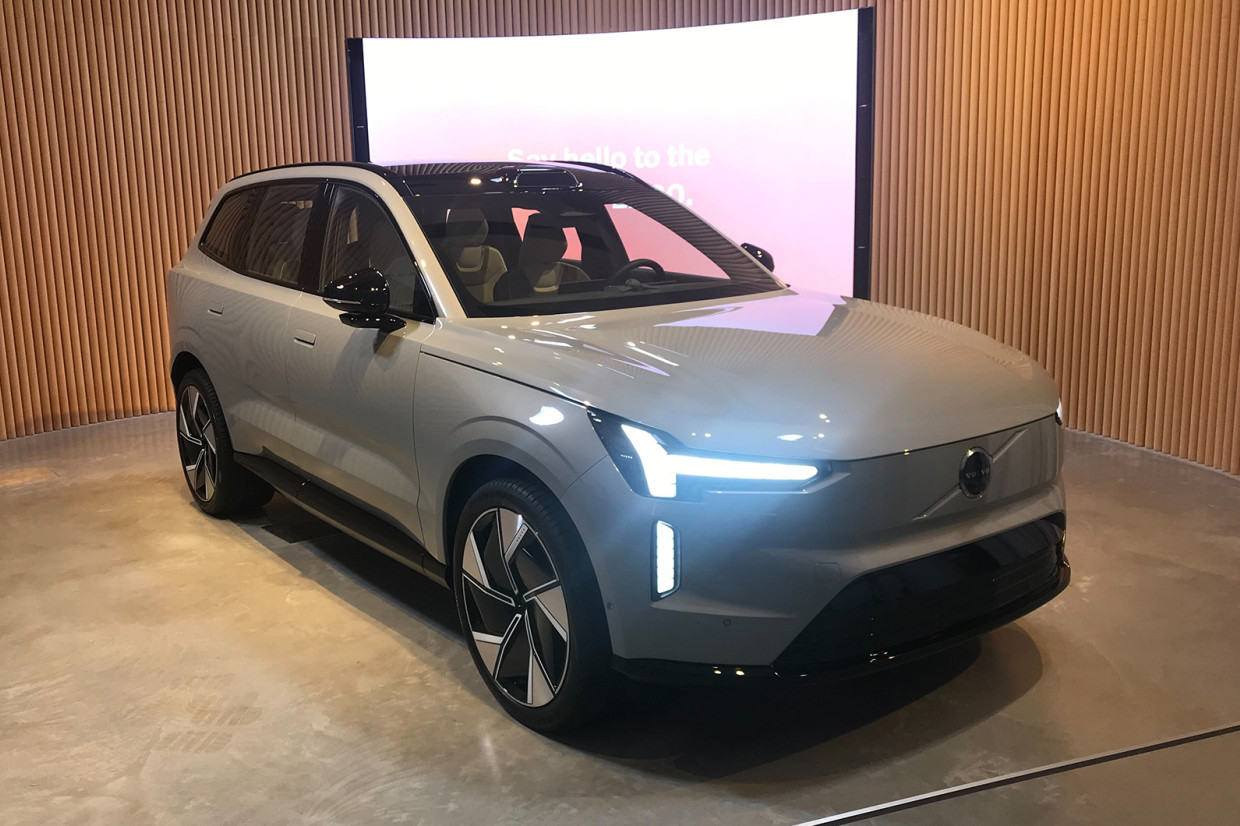
The bold new Volvo EX90 seven-seat SUV has landed – with the firm claiming that the vehicle will serve as an electric flagship the represents the start of a ‘new era’.
The large BMW iX and Tesla Model X rival is due to reach the UK in early 2024 priced from £96,255, and marks a major step on the Swedish firm’s aim to become an electric-only brand by 2030. While it is the firm’s third electric model after the XC40 Recharge and C40 Recharge, it is the first built on a dedicated EV platform.
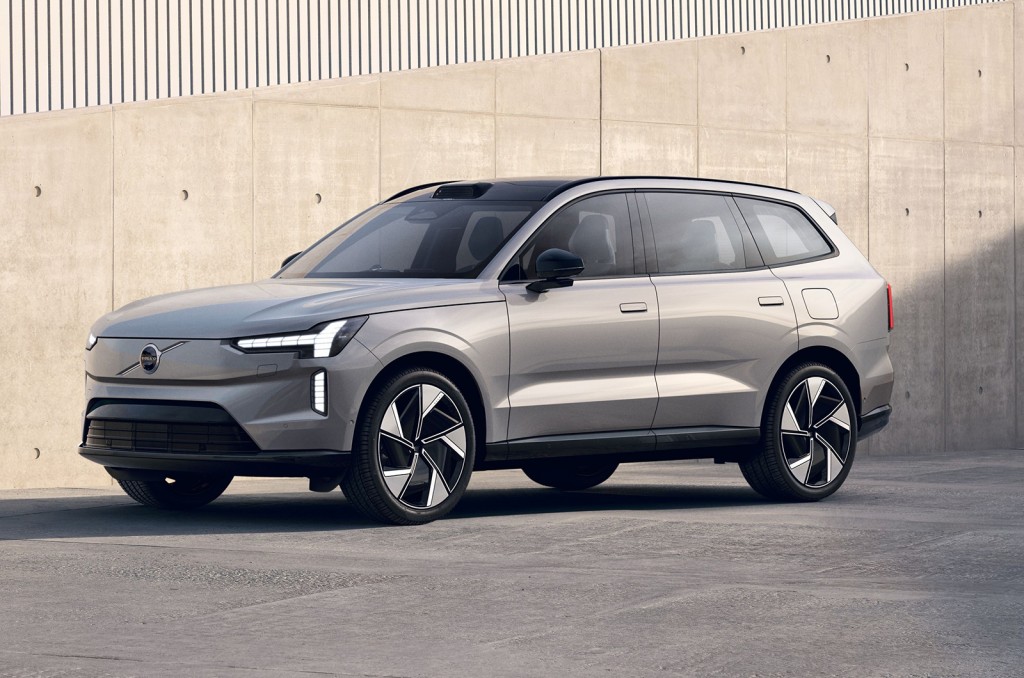
More electric news than you can cram in a Volvo boot: get our FREE newsletter
That new architecture also means the EX90 features plenty of advanced technology and software, including a roof-mounted Lidar sensor as standard. The firm claims that it will set new standards for safety – which is a pretty big claim given that, as you probably know, safety is kinda Volvo’s thing.
New Volvo boss Jim Rowan said the EX90 “is a statement for where we are, and where we are going.” He added that it marked “the start of something new for Volvo Cars in many ways.”
Here’s what else you need to know about the EX90.
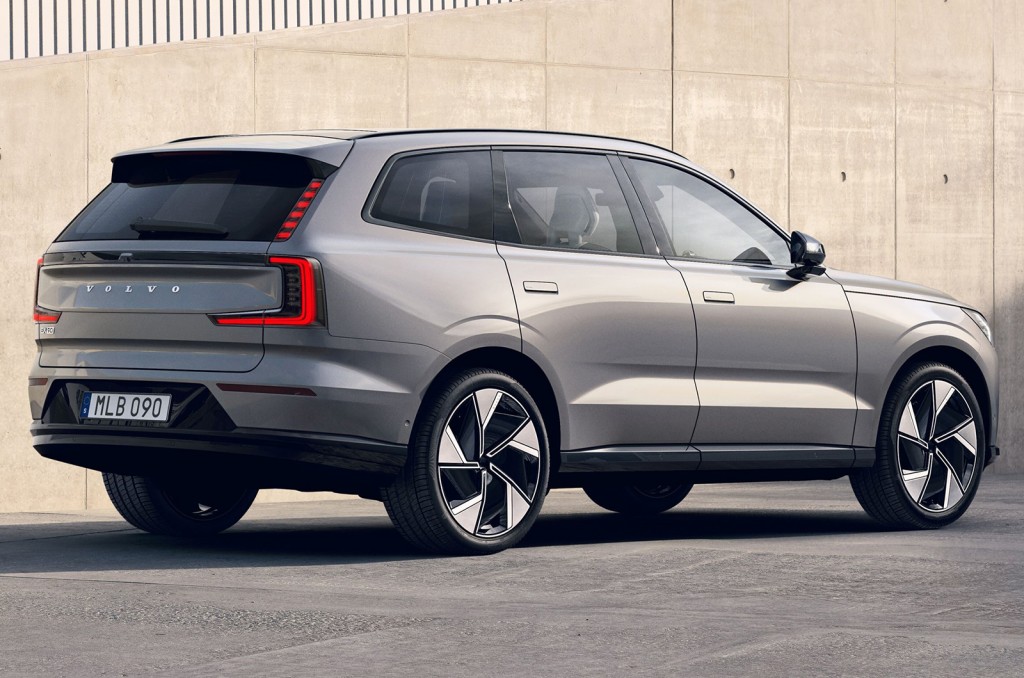
What exactly is a Volvo EX90 anyway?
The Volvo EX90 machine is effectively an electric-only version of the existing XC90 large SUV. Unlike the XC40 Recharge, which sits on an adapted version of the platform used by combustion-engined versions, the EX90 is an entirely new car that just so happens to be broadly the same size as the XC90.
That’s also why the EX90 uses a new model number. You might recall that former Volvo boss Hakan Samuelsson previously hinted this model would get a ‘proper’ name, but Volvo has decided that it’s simpler to stick with an alphanumeric model code.
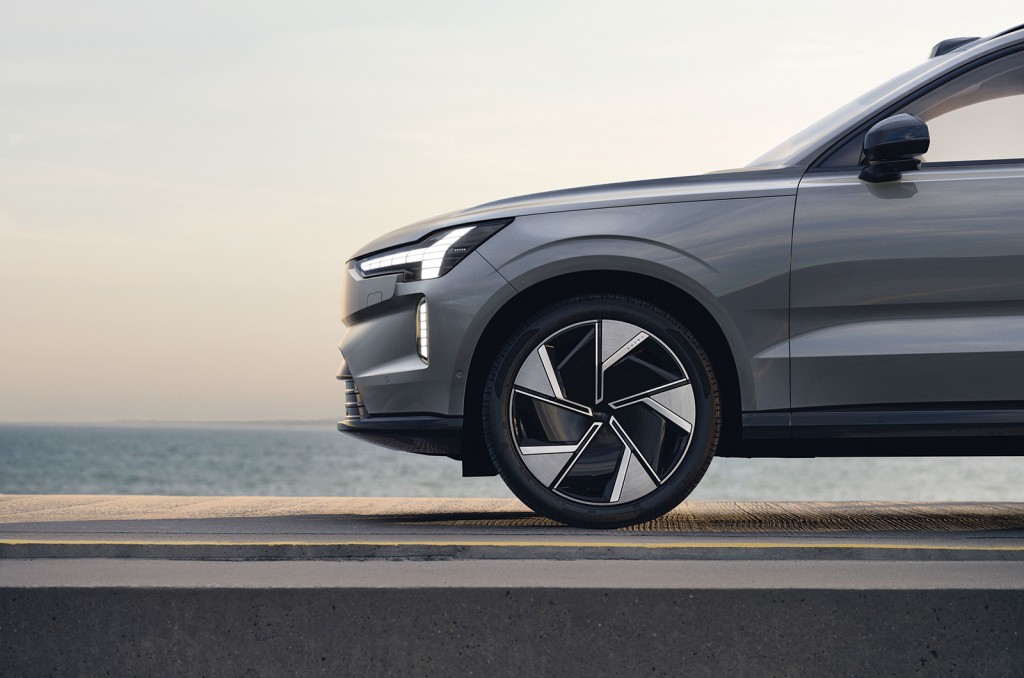
In this case, the E stands for electric, the X stands for cross (marking it out as an SUV) and the 90 signals its size in the Volvo line-up. Expect future electric models to follow a similar system.
The EX90 uses the new SPA2 electric architecture, which has been developed by Volvo and its parent firm Geely. The platform is also used by the recently launched Polestar 3, and the two machines share much of their underpinnings such as the powertrain. But there are several big differences – most obviously that the EX90 is a seven-seater, while the Polestar 3 only seats five.
So what are the key stats I need to know?
At launch in the UK, the EX90 will be offered in a single trim – the fully loaded Ultra – and a single twin-motor, all-wheel-drive powertrain that will be offered in two outputs. Lower-powered versions using a single motor and further trim levels will eventually follow.
The standard Twin Motor models will offer 300kW of power and 568lb ft of torque. The higher-level Twin Motor Performance spec will lift that to 380kW and 671lb ft of torque. As with all Volvo machines, the top speed of both will be limited to 112mph.
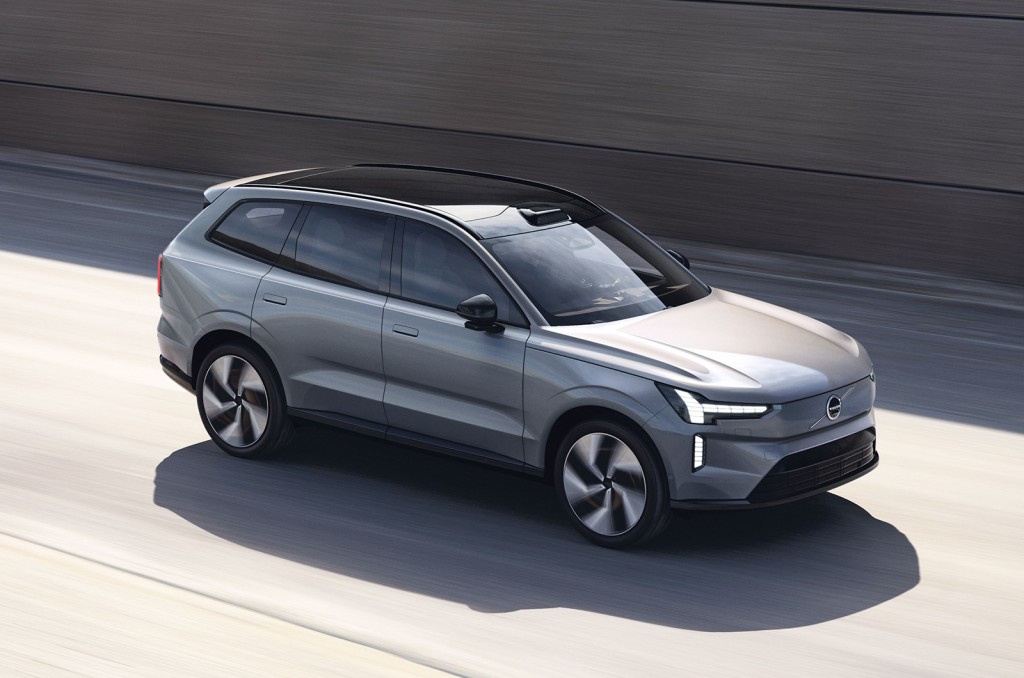
The EX90 draws power from a 111kWh (107kWh usable) battery that gives a range of 364 miles, dropping to 360 miles for the Performance version (although it will be less than that if you regularly use all 380 of those kilowatts). The machine has a claimed efficiency of 2.9 miles per kWh.
Charging can be done at speeds up to 250kW on a suitable fast charger, which allows for a 10-80 per cent charge in 30 minutes.
The EX90 is a pretty big thing: at 5037mm long it’s slightly longer than the XC90. It’s also slightly wider, at a not-inconsiderable 2039mm. But it is lower, with a height of 1747mm. And it’s perhaps a bit sleeker than its boxy styling might look: Volvo claims a drag coefficient of 0.29Cd. As you might expect given its size and chunky battery, it has a kerb weight of 2818kg.
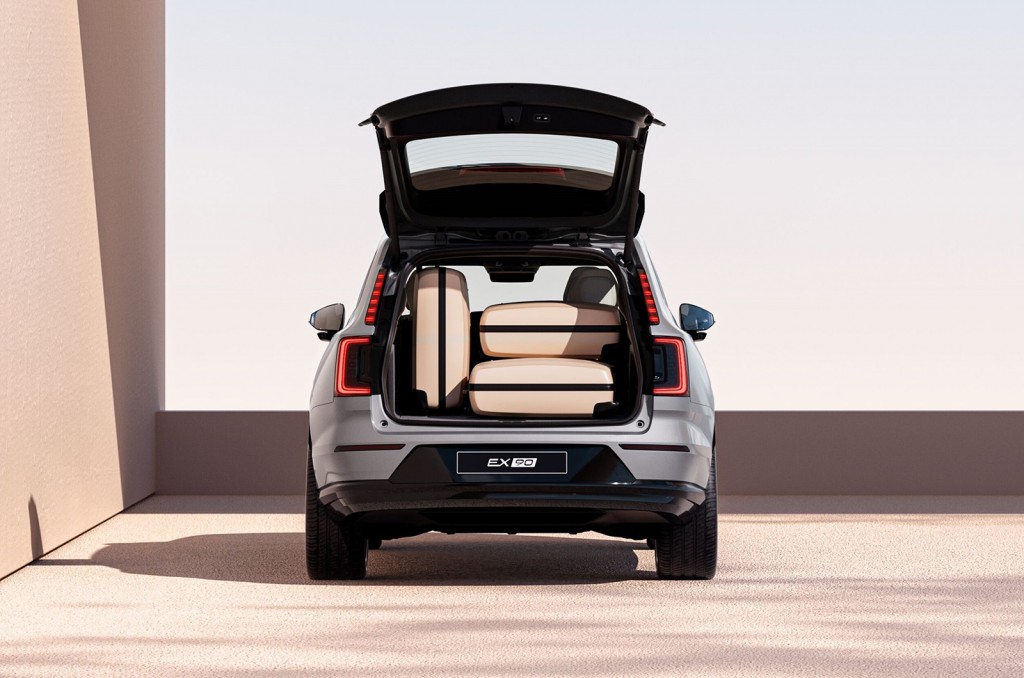
The machine is a rare seven-seat electric vehicle, with three rows of seats. With the rear row in place, the boot offers 310 litres of storage, which rises to 665 litres if you fold the back seat down. Lower both of the passenger rows and there’s a whopping 1915 litres of storage. We’re already excited for our first trip to the tip in one.
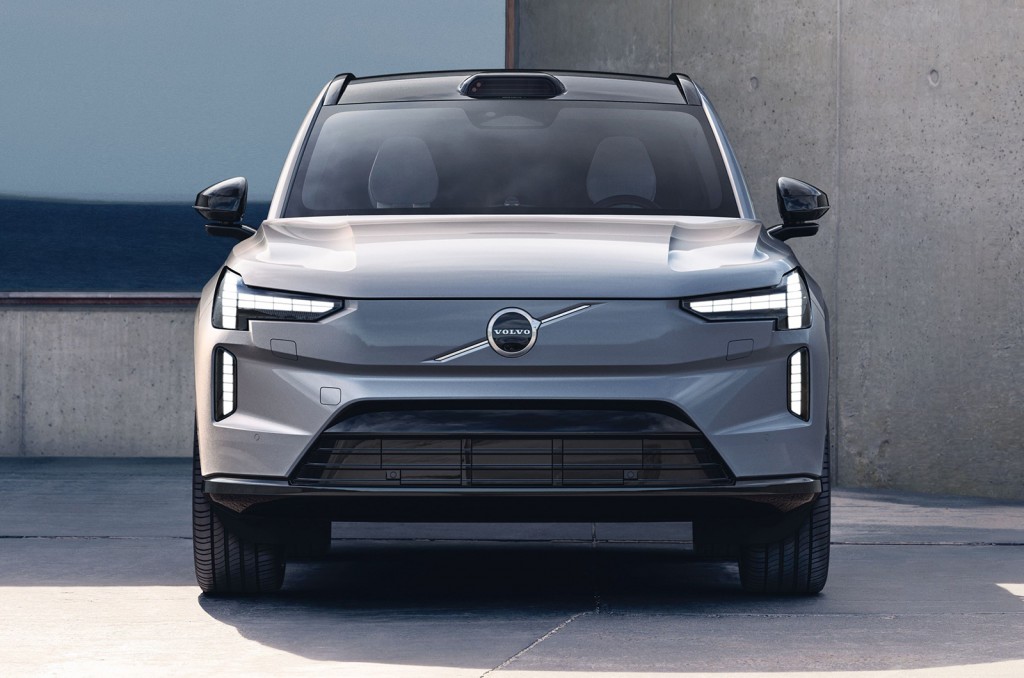
Meanwhile, all the launch models will sit on 22in alloy wheels and feature air suspension as standard. There’s also Pixel LED headlights and soft-close doors.
Let’s talk technology then…
Volvo refers to the the EX90 as a ‘software-defined car’, which is the sort of phrase you hear from car firms at the moment but might really understand. Effectively, an increasing number of the systems and features on modern cars are controlled by software, so Volvo has really upped the computing power.
The core system is powered by the Nvidia Drive platforms Xavier and Orin for the safety systems and artificial intelligence, with Qualcomm Technologies’s Snapdragon Cockpit and software developed in-house by Volvo for the core functions such as the infotainment systems and battery management.
The EX90 offers what the firm calls an ‘invisible shield of safety’, using a raft of sensors, cameras and a Lidar radar mounted on the inside and outside of the machine.
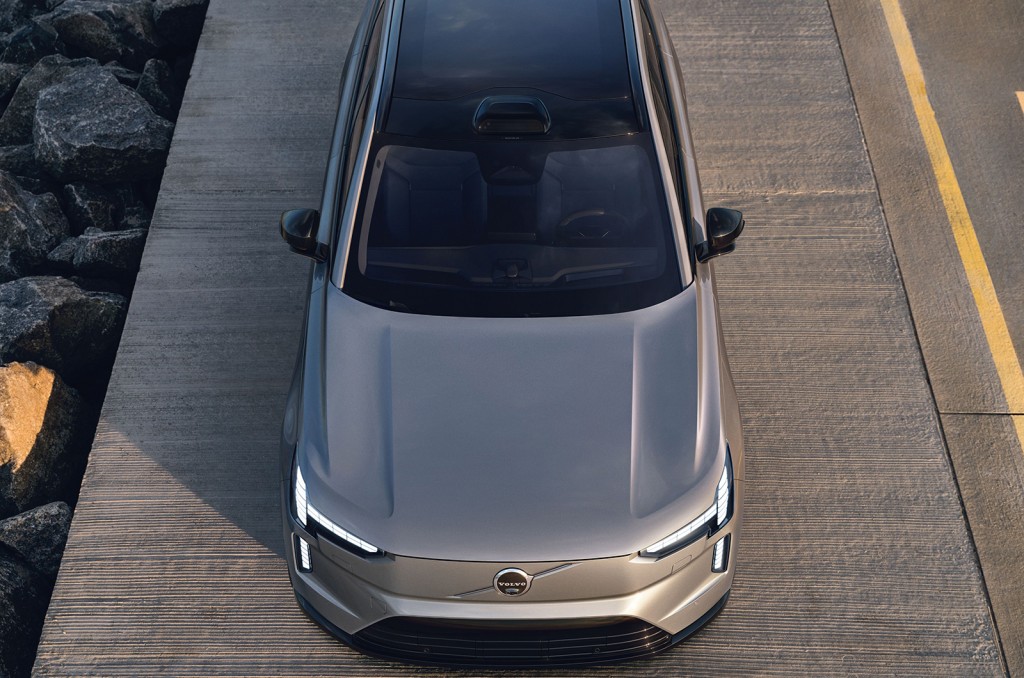
The Lidar, contained in a small bump that’s on the front edge of the roof, is the most notable, especially because it will be offered as standard on the EX90 at launch. It will only be an option on the Polestar 3.
So what is Lidar? Well, it’s effectively a mid-range laser scanner that can detect even small objects a few hundred metres into the distance. It complements the more traditional sensors and cameras you’ll find on other cars, with that data fed into the Nvidia Drive system to create what Volvo terms “a real-time, 360-degree view of the world”.
That in turn powered Volvo’s safety systems such as the assisted driving Pilot Assist function, which will now offer steering support when changing lanes. And it also means that an over-the-air software update could allow the EX90 to offer ‘unsupervised driving’ in the future. But we’ll get into that more later.
The sensors don’t just monitor what’s going on outside the car: various regulators are putting in place laws ensuring car firms have driver monitoring systems, and the EX90 gets ahead of that with sensors that watch you as you drive.
If it sounds a little creepy, it’s there for good reason: its can measure your eye gaze concentration and whether you’ve got your hands on the wheel, and detect when you’re distracted or drowsy. It will then issue a number of warning of increasing urgency and insistence, and will ultimately be able to safely stop the car and call for help if needed.
What else can all this fancy software do?
Volvo’s new system also powers the EX90’s digital info display and infotainment, which runs on a 14.5in vertically-mounted touchscreen the dominates the centre of the dashboard. It’s similar in placement to the XC40 Recharge.
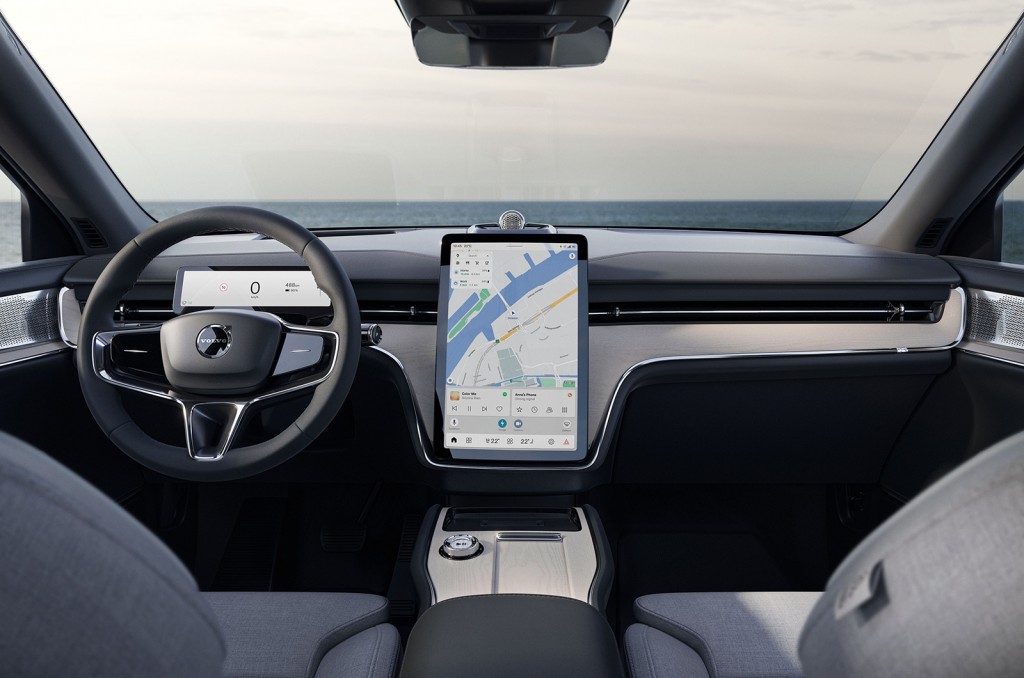
The system is set for 5G connectivity, and uses Volvo’s Google-based infotainment system. The graphics for the interior screens are run by the Unreal Engine, which you might know more for its use in 3D video games. You can’t actually play games on the EX90’s infotainment, but if does mean the displays look particularly sharp and nice.
The Google-based system has Google Assistant and Google Maps built in, and you can add extra apps from the Google Play store. But you can also connect Apple CarPlay wirelessly, should you want to run Apple Maps for whatever reason.
You’ll also be given access to an ‘ecosystem’ of services through Volvo’s app, which will including the ability to use your smartphone as a car key, find public charging and access smart home charging management.
What else should I know about the EX90’s interior?
The EX90 really builds on Volvo’s recent Scandi-cool styling. The Ultra trim that will be offered at launch uses Nordico upholstery. Before you ask, Nordico is a textile made from recycled materials including PET bottles, bio-attributed material from sustainable forests in Sweden and Finland and corks from old wine bottles.
Meanwhile, there’s a 25-speaker – yes, 25: it even has speakers in the headrests – Bowers & Wilkins audio system that offers Dolby Atmos, a panoramic glass roof and four-zone climate control with an air-purification system.
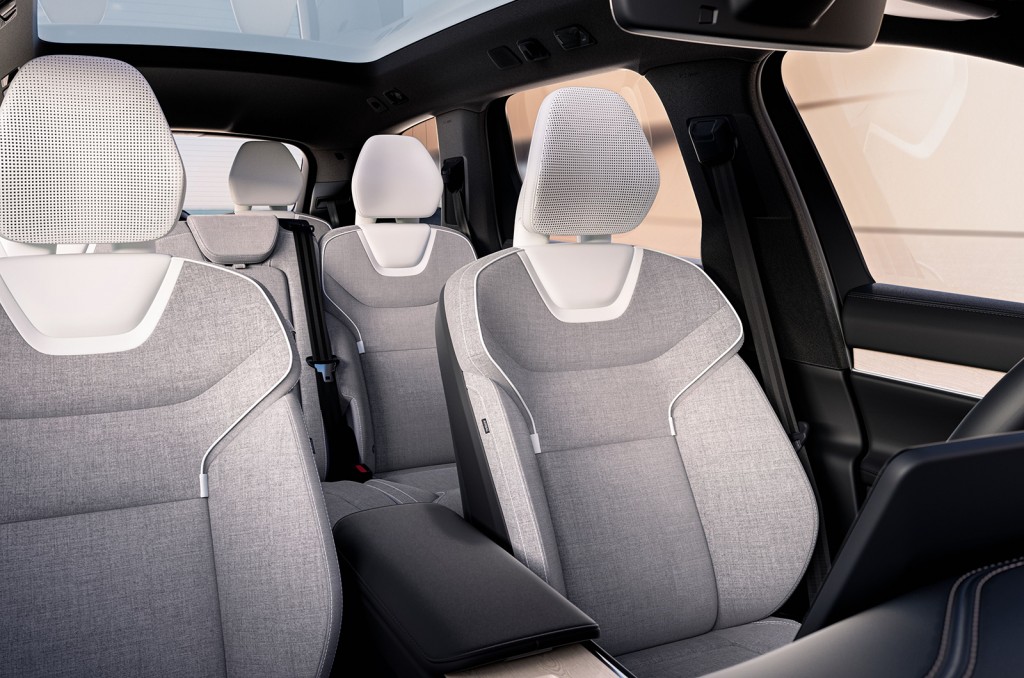
All Ultra-spec models will also be offered with Volvo’s Care Offer, which covers servicing for three years or 60,000 miles, along with ‘wear and tear’ maintenance.
So what about the future?
The really intriguing thing about the EX90 is that you’ll have to wait to experience some of the things it can do – it’s actually ahead of regulations and infrastructure in some cases.
Most notably, Volvo claims the machine will be capable of ‘unsupervised’ autonomous driving in certain situations. That basically means that it will be able to drive itself on certain roads with the right sensor technology and in certain weather conditions – if local regulations allow it.
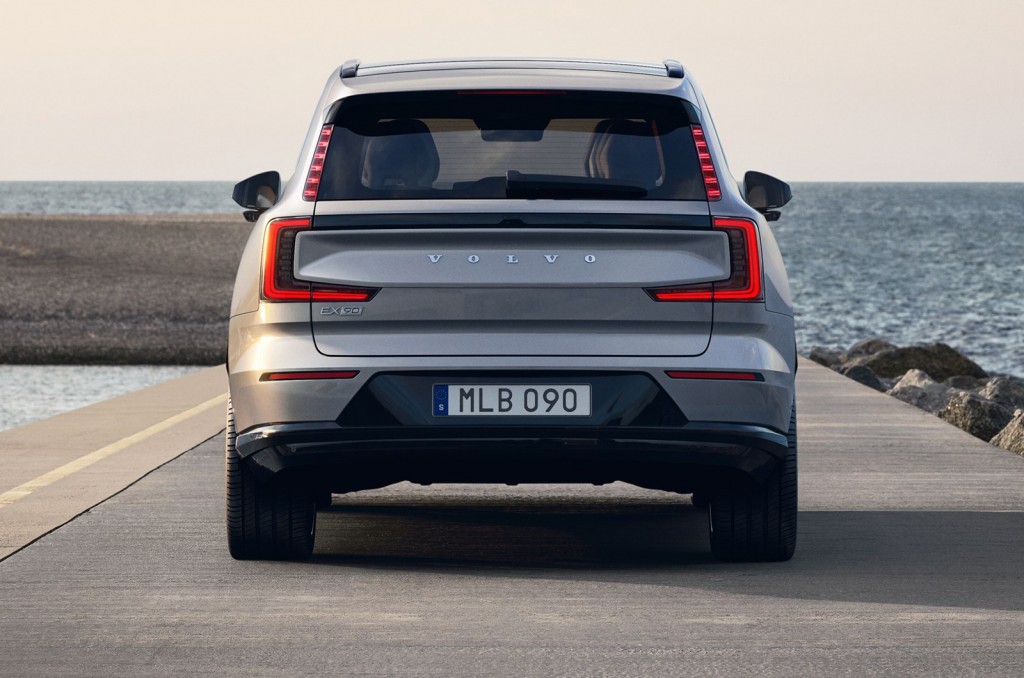
That feature will be offered as an over-the-air subscription when it is available, and there’s no word yet what that might cost.
The EX90 is also capable of bi-directional smart charging, which means that with the right callbox fitted power from the car’s battery can be fed into your home. That means you can charge the EX90 up when electricity rates are low, and draw power from it when prices are higher to potentially lower your energy bill. Potentially, you could eventually even be able to ‘sell’ power back to the grid at times of peak demand.
That service will be offered in certain markets, once available.
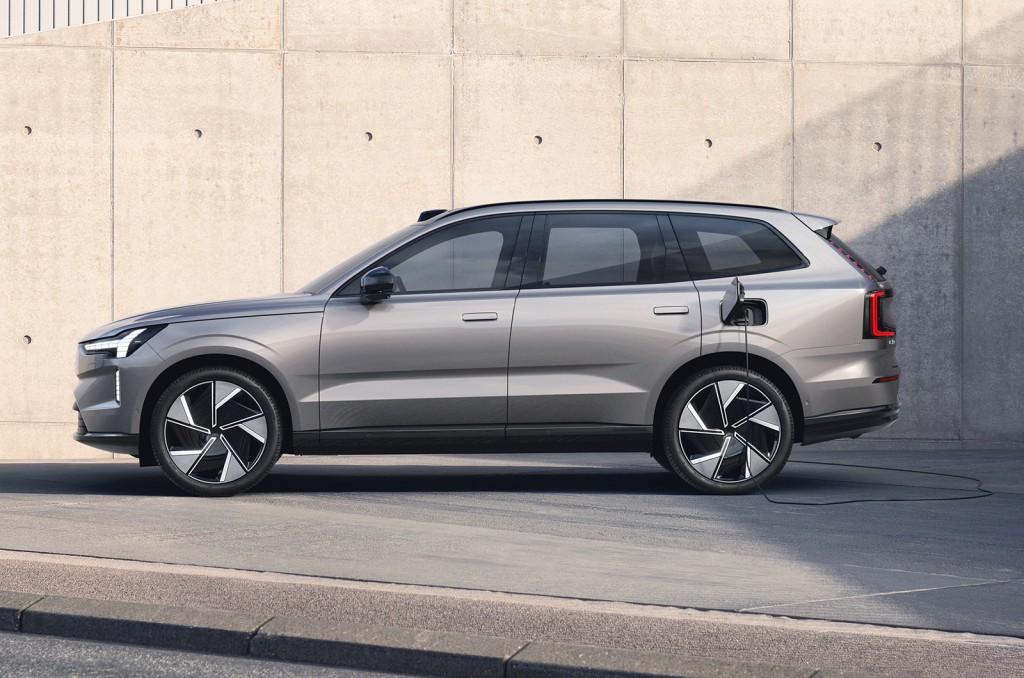
Another bit of future tech is Plug and Charge. That is exactly what the name suggests: when you reach a public charging point you simply plug the car in and it automatically connects it, start charging and deals with payments. Which, gloriously, means no faffing around with apps, RFID scanners or credit cards. Sounds great: we just need to wait for public chargers to catch up with the tech and the service to be enabled.
So what does the EX90 say about the future of Volvo?
Volvo is aiming to become an electric-only brand by 2030, and as its first true electric-only model the EX90 is a key milestone in that. It also marks the start of Volvo revealing one new EV each year in the build-up to that 2030 date.
The firm has previously teased plans for some of its future models. We don’t know what’s coming next, but we do know the firm is working on a small crossover that will sit under next the XC40 Recharge, and will likely take on the EX30 nameplate.
You can also expect an electric version of the current XC60 SUV – yes, that will be the EX60 – and Volvo has also said that it won’t abandon saloon models in the EV age. But given that SUVs dominate the firm’s sales these days – it will even stop making the S60 to start converting its USA plant in Charleston, South Carolina in readiness for EX90 and Polestar 3 production – they might take a little while to arrive.
What will an EX90 cost me and when can I buy one?
You’ll need some patience here, because the EX90 is still some way off. It will go into production late next year in South Carolina, with customer deliveries set to begin in early 2024.
That puts it slightly behind the Polestar 3, which will go into production first at the firm’s plant in Chengdu, China. Eventually, the EX90 and Polestar 3 will both be produced alongside each other in South Carolina and Chengdu.
Volvo has given indicative pricing for the machine – which is to say that with more than a year before it arrives and the world currently being a bit cuckoo bananas, things are understandably subject to change.
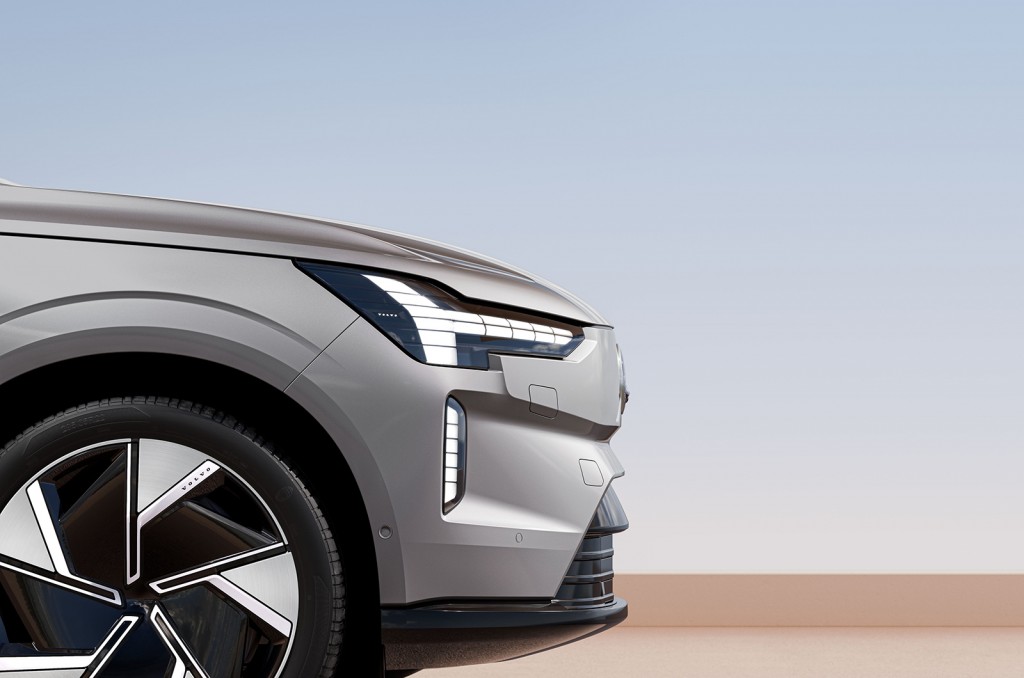
The standard EX90 Twin Motor Ultra will be priced from £96,255, and will be offered on the firm’s all-inclusive Care by Volvo subscription package from £159 a month. The more potent Twin Motor Performance Ultra will be priced at £100,555, or £1699 on the monthly subscription.
Clearly, that pushes Volvo up even higher into proper BMW and Mercedes-Benz-rivalling premium territory, but the firm is hoping that the Scandic-cool design, huge dimensions and high level of safety tech will win over customers.
For comparison, the Polestar 3 starts from £79,900, but those models won’t get the Lidar pack that will be standard on the EX90. While Polestar hasn’t disclosed how much extra that will cost, it likely accounts for the bulk of the difference.
As noted, lower-powered versions with lower levels of trim will eventually arrive, but we’ve yet to get an indication of what they will cost.
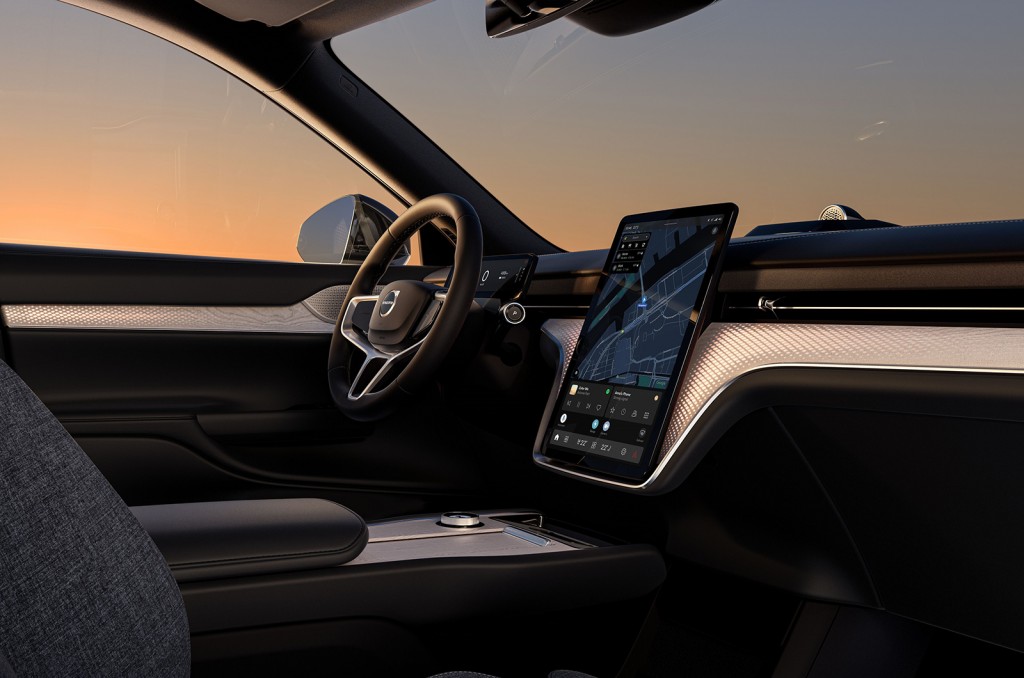
READ MORE
Subscribe to the Move Electric newsletter
e-CARS
Chinese car brand Nio to expand into UK by end of 2023
Driving a Citroën Ami around London: five things we learned
New Polestar 3: 380kW performance EV aims to 'redefine' the electric SUV
e-BIKES
Seven essential accessories to improve your e-bike life
The Lake District village that's pioneering community e-bike schemes
e-MOTORBIKES
Honda to launch more than 10 electric motorbikes by 2030
New Zero DSR/X launched as electric adventure motorbike
Stilride: the brand reinventing electric motorbike production
e-SCOOTERS
8Tev B12 Roam e-scooter review
Pure Electric launches two new machines that 'reinvent' the e-scooter
Rise in e-scooter accidents prompts call for 'urgent' government action
e-WORLD
Artemis electric ferry revealed for Bangor to Belfast service
New Mobilize Solo Concept is a safety-conscious e-scooter rival
Volta Zero: the electric truck tearing up the rule book for the electric age

